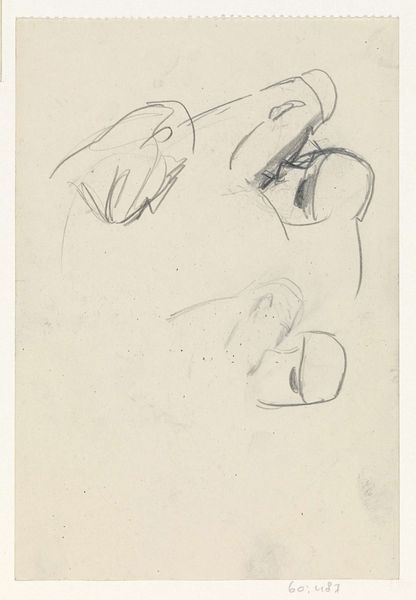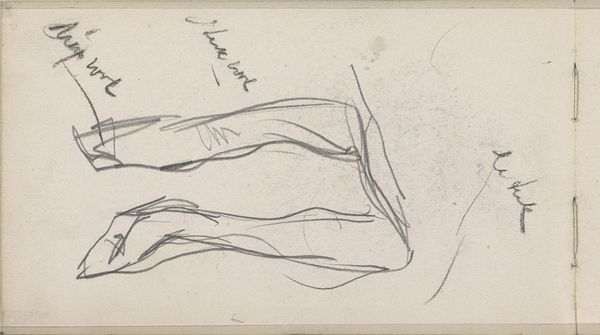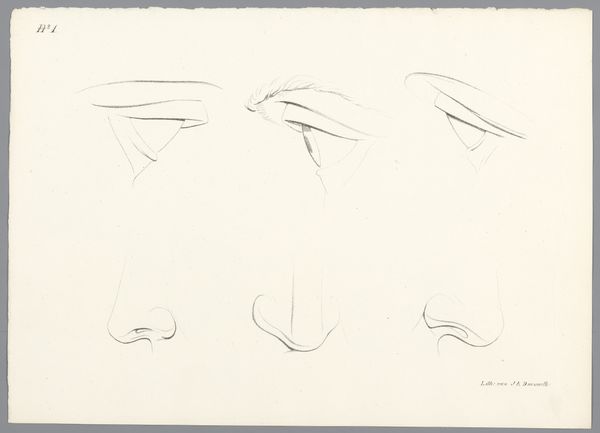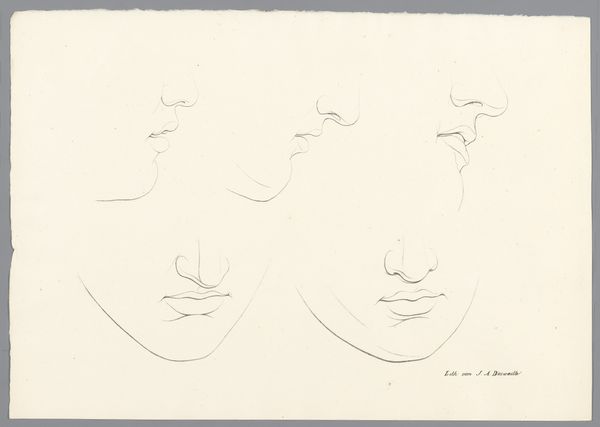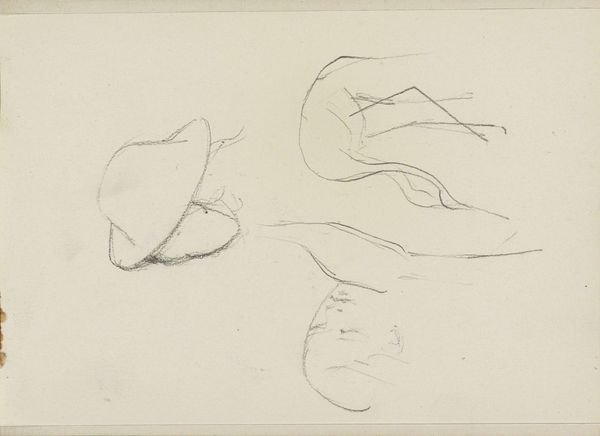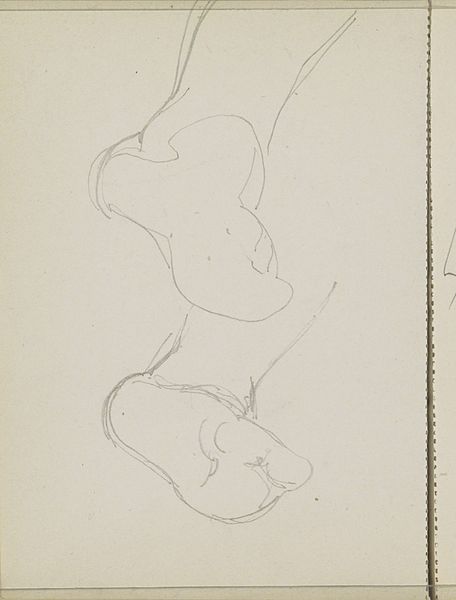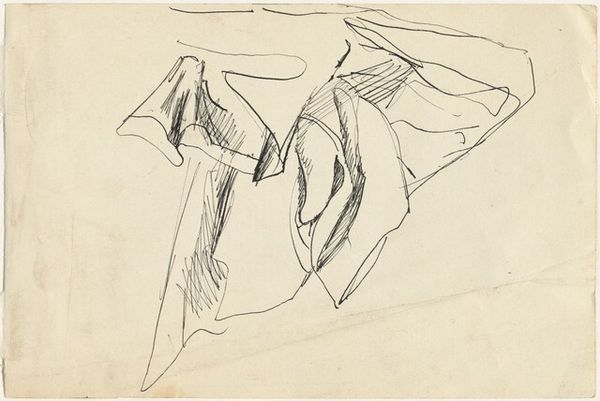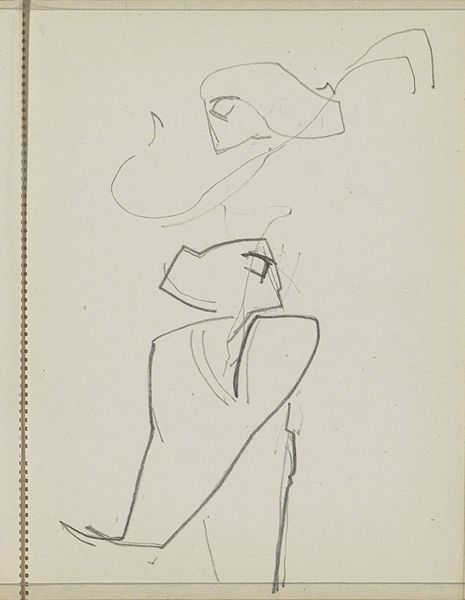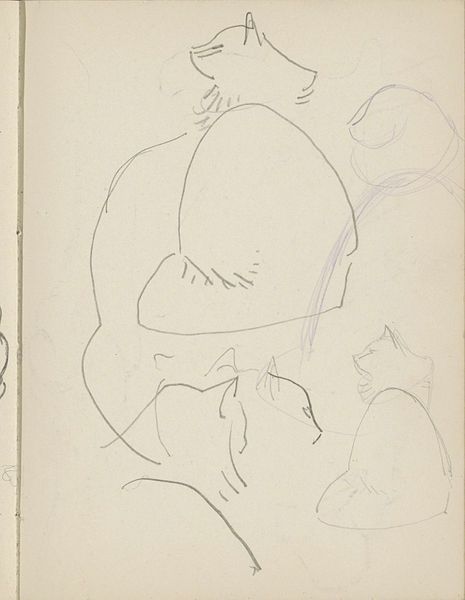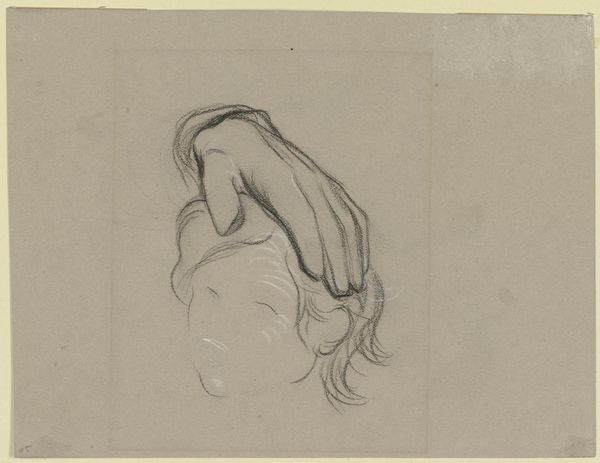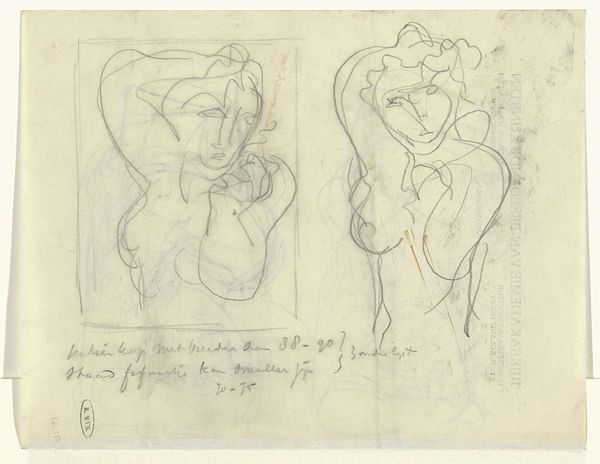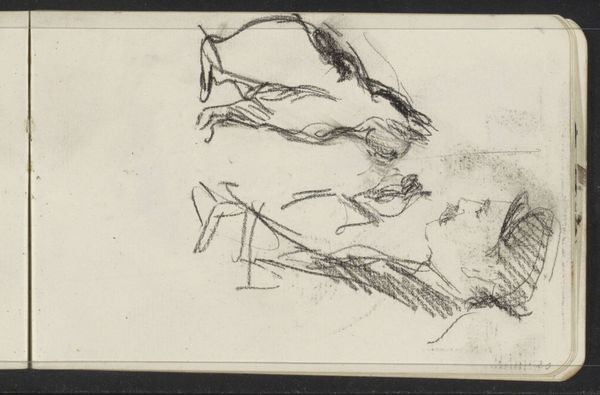
drawing, paper, ink
#
portrait
#
drawing
#
figuration
#
paper
#
ink
#
line
Dimensions: height 159 mm, width 215 mm
Copyright: Rijks Museum: Open Domain
Curator: Before us is "Hals van een man en vrouw," or "Neck of a Man and Woman," created by Hans Borrebach. Though undated, it's thought to originate from before 1961, executed in ink on paper. A striking minimalist composition, wouldn't you agree? Editor: Striking is the word. The bold ink strokes—almost like calligraphy—define the forms with incredible economy. Notice how the negative space amplifies the subjects. It is minimal but effective. Curator: Indeed. Borrebach was active in a time of great social change in the Netherlands, moving from post-war reconstruction toward greater international engagement. Abstraction and simplified figuration were becoming increasingly prominent ways to express this sense of modernity. Does this speak to this historical narrative, would you say? Editor: Absolutely. I am drawn to this sense of incompleteness, which only underscores how our minds are hardwired to fill in missing parts of these pictures. Borrebach plays brilliantly with this perceptive phenomenon by leaving off most details and implying them with just enough suggestive strokes, the absence of color pushes the composition to be more simplified to essential aspects only. Curator: Precisely. The rapid strokes and lack of precise detail perhaps imply that these studies may have functioned more as notes than works ready for display in a formal gallery setting. It would be quite illuminating to know precisely when this work was produced to add some certainty to our knowledge. Editor: Well, there's an authenticity to it, wouldn’t you say? Raw yet confident and modern despite the date. The composition achieves great fluidity while the angular profiles of each head have a touch of understated drama. I find myself pondering whether Borrebach intended to evoke both their proximity to and separation from one another. Curator: A provocative idea. I am also considering these studies of form; considering Borrebach's position at the time could give more context of his oeuvre at that period. I like how Borrebach shows how much is possible by omitting aspects in representation and how form and space create an essential picture of figures in our thoughts. Editor: It indeed prompts reflection and engages with its material aspects and visual grammar of pure form to convey depth and perception. I am struck by the power of this line.
Comments
No comments
Be the first to comment and join the conversation on the ultimate creative platform.
